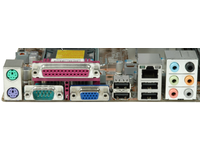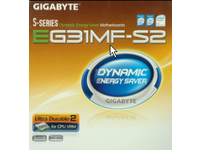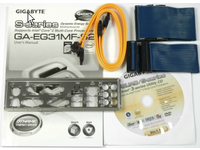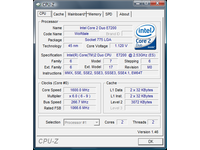G31 And E7200: The Real Low-Power Story
Gigabyte GA-EG31MF-S2 (G31 Chipset)
The second board in this little roundup comes from Gigabyte and is called the GA-EG31MF-S2. Unlike the Foxconn product, it offers four DDR2 memory slots, although you are still limited to the maximum supported memory capacity of 4 GB for the G31 chipset. It does not come with all solid capacitors, which doesn’t have to be a disadvantage. Again we only found a D-SUB15 analog output for displays, which we think is not the best choice—any modern graphics solution should at least have a digital DVI output.
Features
The board comes with the same basic features as its competitor, but Gigabyte adds some more components, such as a FireWire/400 controller. A second port can be activated once you purchase an adapter cable and attach it to the additional FireWire header on the board. The same applies to four more USB 2.0 ports; four are ready to be used. Chipset components are kept cool using heat sinks with no moving parts, which is good for keeping both system noise and power consumption low. You get one UltraATA/100 channel and a floppy port as well as two 32-bit PCI slots. Like Foxconn, Gigabyte provides one x16 and one x1 PCI Express slot for upgrades.
Power and Performance
All mainstream and better Gigabyte boards are equipped with voltage regulators that Gigabyte states are fully VRM 11.1-compliant. The layout on the GA-EG31MF-S2 is based on four phases and solid capacitors, which provides better voltage stability at high current levels. This is necessary for power-hungry processors such as 3+ GHz quad core models. However, we found that the Gigabyte board required considerably more idle power than the Foxconn board, despite similar components and despite the fact that Gigabyte’s Dynamic Energy Saver (DES) technology was activated. DES allows the system to switch off voltage regulator phases when they’re not required.






Get Tom's Hardware's best news and in-depth reviews, straight to your inbox.

